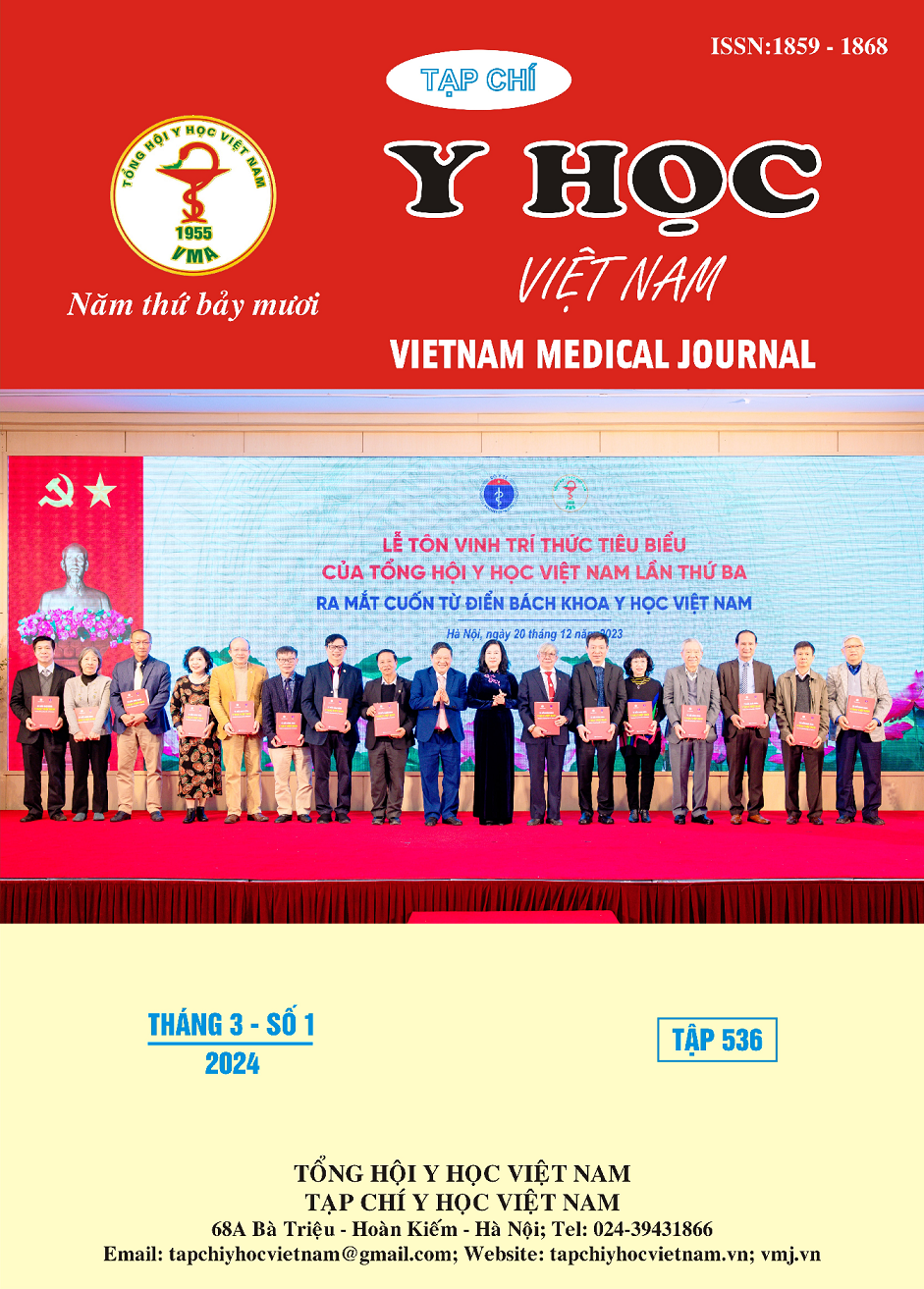CHARACTERISTIC OF SECONDARY CLEFT LIP/NASAL DEFORMITIES AFTER PRIMARY PLASTIC SURGERY ON THE PATIENT WITH UNILATERAL CLEFT LIP/PALATE AT E HOSPITAL IN 2023
Main Article Content
Abstract
Objective: Cleft lip (KHM) is a common congenital malformation in the maxillofacial region. Surgery to create a suction nose to restore function and aesthetics is a necessary need for patients and their families, but there are still many lip and nose variations after surgery. Therefore, evaluate the altered nose and lip forms to plan a tactical correction. Research method: 31 patients with unilateral CKD were skillfully created for the first time using different medical methods at the free screening and consultation program for healthy children and congenital heart disease. students of the Department of Dentistry and Cardiovascular Center, E hospital. Patients were evaluated according to Motier's scale (1997) for entertainment characteristics: red lips, lip skin, lip velvet, nose. Results: Common deformities in red lips are protrusion (67.7%) and deviation of lip contour (70.9%). Lack of height environment outside the gap is 32.2%. Postoperative scars were elongated and convex using 48.4%. Common nasal variations are narrow nose (83.8%), low nasal wings (74.2%), slipped nasal septum (67.7%), and too short columella (54.8%). Conclusion: Nasal lip variations after the first KHM surgery are unavoidable, so a plan is needed to protect these variations.
Article Details
References
2. Smith J.D., Bumsted R.D. (2006), Pediatric Facial Plastic and Reconstructive Surgery, Raven Press Publisher, Washington, USA.
3. Mulliken J.B., Martinez P.D. (1999), “The principle of rotation advancement for repair of unilateral complete cleft lip and nasal deformity: technical variations and analysis of results”, Plastic and Reconstruction Surgery, 104, pp.1247-1260.
4. Mortier P. B, Martinot L. V (1997), “Evaluation of the results of cleft lip and palate surgical treatment: Preliminary report”, Cleft palate- craniofacial Journal, Vol 34 (3), 247- 254.
5. Rajanikanth B.R., Rao K.S., Sharma S.M., Prasad B.R. (2012), “Assessment of Deformities of the Lip and Nose in Cleft Lip Alveolus and Palate Patients by a Rating Scale”, Journal of Maxillofacial Oral Surgery, 11(1), pp.38-46.
6. Nguyễn Văn Minh (2018), Đánh giá những biến dạng môi mũi bệnh nhân sau tạo hình khe hở môi một bên lần đầu, Tạp chí Y Dược học - Trường Đại học Y Dược Huế - Tập 8, số 5 – tháng 10/2018.
7. Christofides E, Potgieter A, Chait L. A long term subjective and objective assessment of the scar in unilateral cleft lip repairs using the Millard technique without revisional surgery. J Plast Reconstr Aesthet Surg 2006;59(4):380–386. doi:10.1016/j.bjps.2005.04.0379.
8. Lê Đức Tuấn (2004), Nghiên cứu sữa chữa những biến dạng môi - mũi sau phẫu thuật khe hở môi một bên bẩm sinh, Luận án tiến sĩ y học, Đại học y Hà Nội, Hà Nội.
9. Cheema S.A. và Asim M. (2014), “An Analysis of Deformities in Revision Surgeries for Secondary Unilateral Cleft Lip”, Journal of the College of Physicians and Surgeons Pakistan, 24 (9), pp.666-669.
10. Nguyễn Trọng Điểm (1995), “Nhận xét 100 trường hợp khe hở bẩm sinh môi trên điều trị phẫu thuật tại viện Quân y 175”, Thông tin mới Răng Hàm Mặt, tr.37-40.


